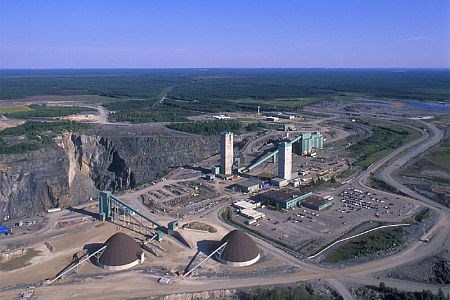The ripple effects of the ongoing strike at Vale Inco's Sudbury operations have officially reached into Timmins, where a lack of available copper concentrate has resulted in a temporary shutdown at Xstrata Copper's Kidd Metallurgical Site.
Due to begin Sept. 7, the shutdown of the copper operations is currently slated to reach from seven to 10 weeks. It may extend further depending on the availability of new feed and other decisions to be made by company officials.
While layoffs have been confirmed, it is still "too soon to say" the precise number of employees that will be affected by the move, according to Louis-Philippe Gariépy, spokesperson for Xstrata Copper.
Of the 800 people employed at the Kidd Met site, the 200 workers in the smelter and refinery will be affected by the shutdown, with some staff due to be shifted to other roles.
"We had seen an already tight supply situation over the last few months, but those problems are compounded by the strike at Vale Inco in Sudbury," says Gariépy.
"We were already running at a reduced rate, and we can no longer do that. We just simply have to shut the plant down."
Twenty per cent of the plant's supply of copper concentrate was sourced from Vale Inco's Sudbury operations, where 3,100 striking members of United Steelworkers Local 6500 have brought production to a halt.
However, Vale officials have announced their intention to use 1,200 non-unionized employees and some outsourced staff to return to partial production through the strike. Regardless of this move, Xstrata cannot speculate on its potential to generate any new feed that would be provided.
"We have to work with the facts we have in front of us, which is that we're out of supply," says Gariépy.
Officials will not look for any additional feed sources through the shutdown, as it "would not be economically viable."
The shutdown is not expected to impact upon any of Xstrata's other operations.
The move mirrors an eight-week shutdown which hit the Kidd Metallurgical site's copper smelter on April 13, due to a drop in the sales of sulphuric acid. The temporary reduction of the site's acid production affected 175 employees.
As the acid-related shutdown came and went, local officials believed that the worst was over, making this newest announcement that much more disappointing, says Timmins Mayor Tom Laughren.
"It's never one you want to hear about," says Laughren. "Am I surprised? Yes, because I thought we kinda gotten by the sulfuric acid crunch, and even though I knew things were tough, I thought that they'd sail ahead."
This second shutdown offers additional challenges. Some employees were asked to take holidays through the eight-week April shutdown, making that time unavailable for this round. Laughren also expects some contractors may feel the pinch through the shutdown as in-house workers may instead be asked to perform various tasks.
"It's like the Inco strike, which doesn't only affect the guys who are on strike. It affects the contractors, the suppliers, the truckers and shippers, you name it. It just keeps multiplying."
This challenge further highlights the need for the Northern Ontario Growth Plan to move forward, says Laughren. He emphasized this necessity in a conversation with Michael Gravelle, Minister of Northern Development, Mines and Forestry, on the day the second shutdown was announced.
While mining continues to be "huge" in places like Sudbury and Timmins, this new shutdown shows how important it is for these cities to find ways to diversify, says Laughren.
"We all need to get there."




